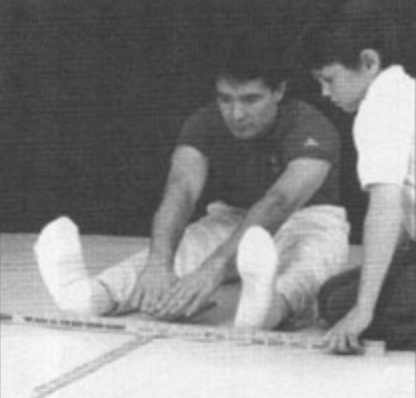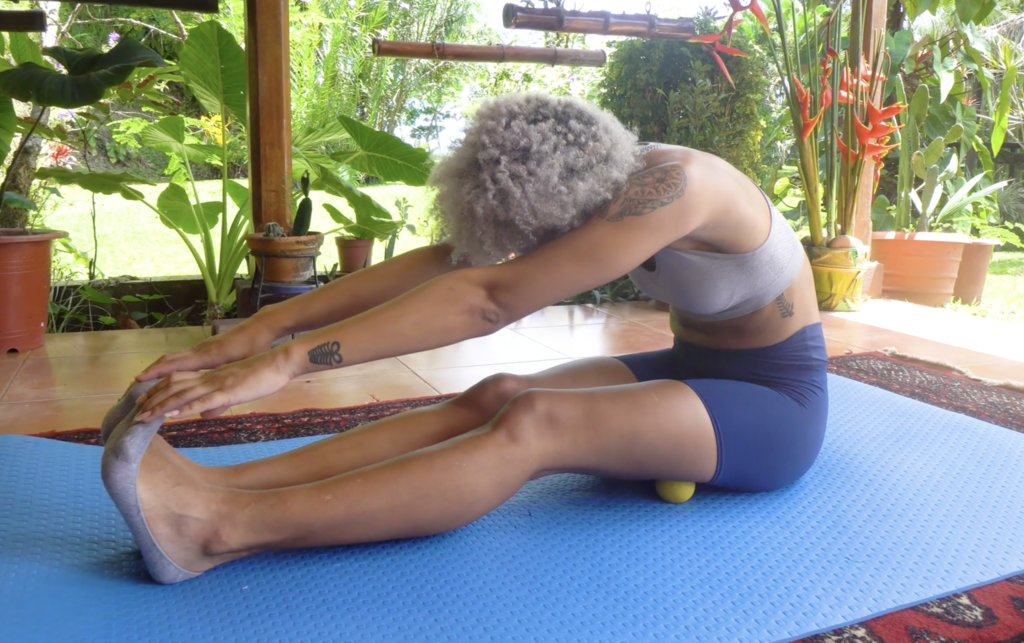When it comes to overall fitness and flexibility, the health of our lower back and hamstring muscles plays a crucial role. A widely used method to assess the flexibility of these muscle groups is the “Sit and Reach” test. In this article, we’ll dive into the details of this test, its significance in fitness evaluations, and how it can be utilized to monitor progress in flexibility training and assess the risk of injury.
What is the Sit and Reach Test?

The Sit and Reach test involves measuring the distance an individual can reach forward while seated, as if trying to touch their toes. This simple test specifically targets the flexibility of the lower back and hamstring muscles. It is a quick and effective way to evaluate the suppleness of these muscles and determine their range of motion.
Performing the Test
To conduct the Sit and Reach test, follow these steps:
- Find a flat surface: Begin by locating a flat surface, preferably with a marked measuring tape or ruler placed on the ground.
- Proper positioning: Sit on the floor with your legs fully extended in front of you. Your feet should be pressed against the measuring tape or ruler, toes pointing upward.
- Reach forward: Extend your arms forward, placing one hand on top of the other, and slowly reach towards your feet. Keep your knees straight throughout the movement.
- Record the measurement: Note the distance you were able to reach. Positive values indicate how far you were able to reach beyond your toes, while negative values represent how far short you were from reaching them.
Importance of the Sit and Reach Test
The Sit and Reach test holds significant value in the realm of fitness and physical evaluations. Here’s why:
1. Flexibility Assessment
Flexibility is a crucial aspect of overall fitness, and the Sit and Reach test specifically targets the flexibility of the lower back and hamstring muscles. By knowing how far you can reach, you gain insights into the suppleness of these muscles and identify any potential tightness or restrictions.
2. Progress Monitoring
Whether you are engaged in a flexibility training program or any fitness regimen, monitoring your progress is vital. The Sit and Reach test serves as a reliable benchmark to track improvements in your hamstring and lower back flexibility over time.
3. Injury Risk Assessment
Tight or inflexible hamstring and lower back muscles can increase the risk of various injuries, including strains and sprains. By performing the Sit and Reach test, you can gauge your vulnerability to such injuries and take preventive measures accordingly.
The Sit and Reach test involves measuring the distance an individual can reach forward while seated, as if trying to touch their toes. This simple test specifically targets the flexibility of the lower back and hamstring muscles. It is a quick and effective way to evaluate the suppleness of these muscles and determine their range of motion.
To conduct the Sit and Reach test, follow these steps:

- Find a flat surface: Begin by locating a flat surface, preferably with a marked measuring tape or ruler placed on the ground.
- Proper positioning: Sit on the floor with your legs fully extended in front of you. Your feet should be pressed against the measuring tape or ruler, toes pointing upward.
- Reach forward: Extend your arms forward, placing one hand on top of the other, and slowly reach towards your feet. Keep your knees straight throughout the movement.
- Record the measurement: Note the distance you were able to reach. Positive values indicate how far you were able to reach beyond your toes, while negative values represent how far short you were from reaching them.
Importance of the Sit and Reach Test
The Sit and Reach test holds significant value in the realm of fitness and physical evaluations. Here’s why:
1. Flexibility Assessment
Flexibility is a crucial aspect of overall fitness, and the Sit and Reach test specifically targets the flexibility of the lower back and hamstring muscles. By knowing how far you can reach, you gain insights into the suppleness of these muscles and identify any potential tightness or restrictions.
2. Progress Monitoring
Whether you are engaged in a flexibility training program or any fitness regimen, monitoring your progress is vital. The Sit and Reach test serves as a reliable benchmark to track improvements in your hamstring and lower back flexibility over time.
3. Injury Risk Assessment
Tight or inflexible hamstring and lower back muscles can increase the risk of various injuries, including strains and sprains. By performing the Sit and Reach test, you can gauge your vulnerability to such injuries and take preventive measures accordingly.
Ball Acupressure and the Sit and Reach Test


Ball acupressure is a technique that involves using a ball to apply pressure to specific points on the body, promoting relaxation and pain relief. The Sit and Reach test can be a helpful indicator of the effectiveness of ball acupressure.
Before starting your ball acupressure routine, perform the Sit and Reach test to establish your baseline flexibility. After completing the ball acupressure sessions, retest your flexibility using the Sit and Reach test once more. By comparing the two measurements, you can gauge if the acupressure has had a positive impact on your hamstring and lower back flexibility.
Safety Tips for the Sit and Reach Test
To ensure the safety and accuracy of the Sit and Reach test, keep the following tips in mind:
- No Bouncing or Forcing: Avoid bouncing or forcing your body into the reach position. This can cause muscle and tendon damage.
- Reach Comfortably: Extend as far as you can without experiencing any discomfort. The goal is to measure your current flexibility, not to push yourself to extremes.
- Repeat for Accuracy: Perform the test multiple times and take the average to get a more accurate measurement.
Conclusion
The Sit and Reach test is a straightforward yet effective way to assess the flexibility of your lower back and hamstring muscles. By understanding the importance of this test and its application in fitness evaluations, you can make informed decisions about your flexibility training and injury prevention strategies.
